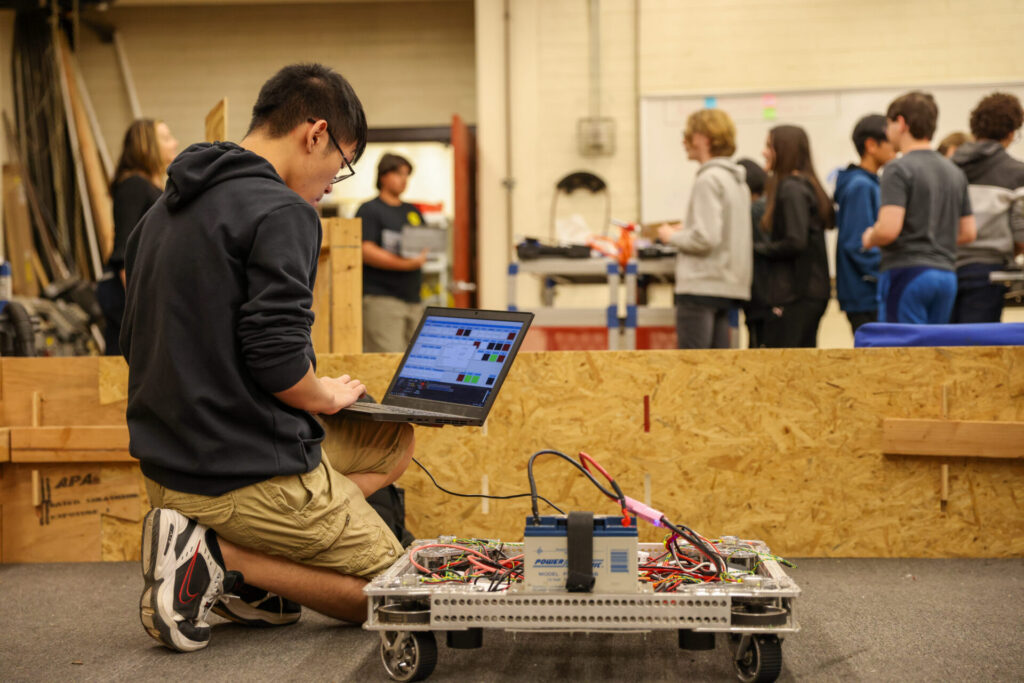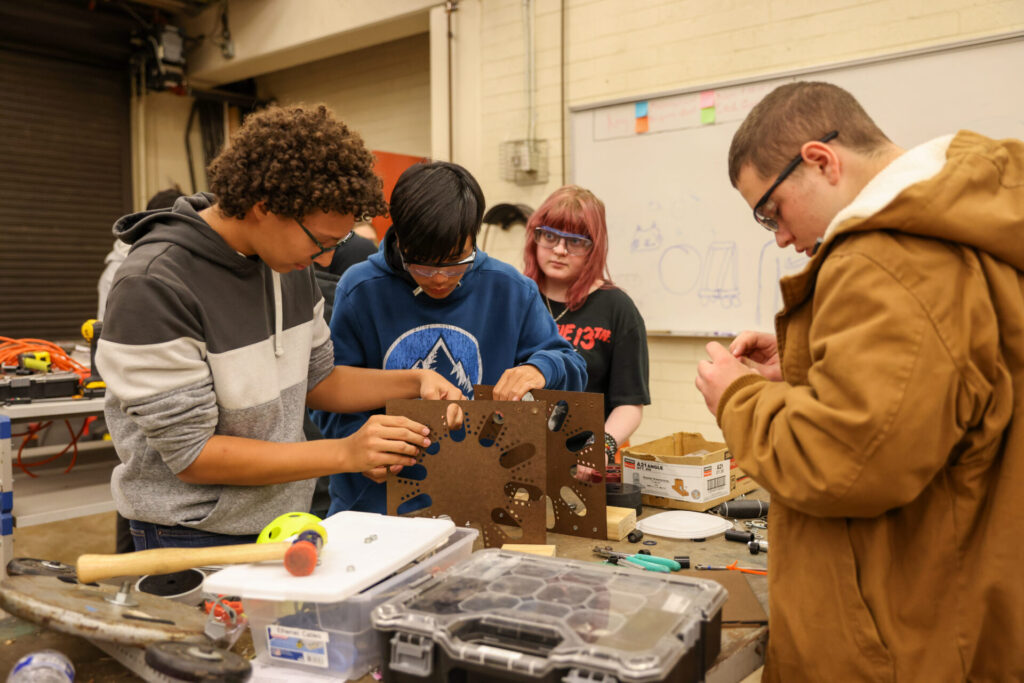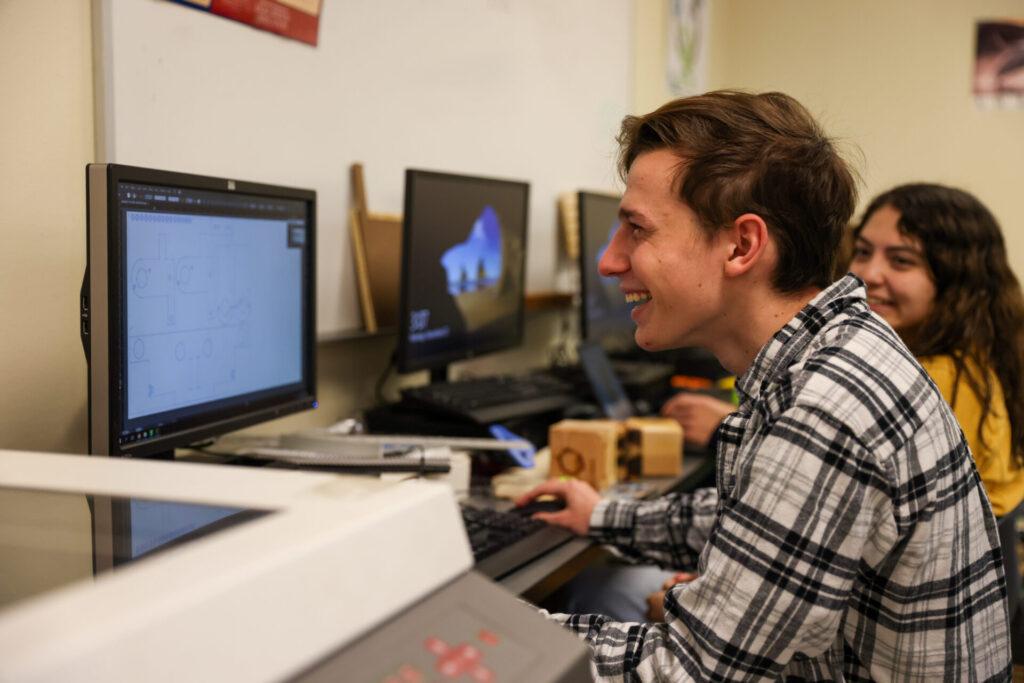In the bustling robotics room at Corona del Sol High School, the sounds of machinery, buzzing conversations, and focused work create an energetic atmosphere. Ben Lewandowski, the president of the student-run robotics program, gives his team final instructions before they disperse to their respective stations. Fresh from their victory at the Arizona FIRST Robotics State Championship, the team vibrates with excitement.
The AZTECH Robotics Team 6749 has been making surges in the world of robotics for the past few years. They have competed in various regional and national events, showcasing their skills and creativity in designing, building, and programming robots that can perform various tasks and challenges. But winning big has been elusive until now.

“Winning state was huge!” Lewandowski, a junior at Corona, said. “It meant the world to me.” The team attributes their success to an unwavering commitment to hard work, teamwork, and dedication. Hours spent refining their robot and strategies in the school’s robotics lab culminated in a hard-fought victory at the state championship. Their triumph was no small feat. The team faced formidable competition from across the state and navigated through intense matches. Despite a setback that landed them in the loser’s bracket, their determination and commitment shone through, ultimately securing the state title with a 5-point difference in the 116-111 final.
Even though Lewandowski couldn’t be present at the final match due to homecoming commitments, he and his friends eagerly watched the results on an iPad during homecoming dinner. “We had the iPad up, and we were, like, so ecstatic!” Lewandowski said when they watched the results. Lewandowski focuses on team building and infusing enjoyment into every facet.

This ethos extends even to naming the robots. Quetzalconal (big one) and Quetzalconal Junior (small one), their two robotic creations, playfully reinterpret the Aztec god’s name. Alix Walker, the team’s documentation, explains that the game’s conecentric nature influenced the decision. Instead of the predictable Quetzalcoatl, they opted for the spirited Quetzalconal. (Full disclosure––Walker is also my son.) Mel Wendell, a mentor and engineering teacher, attests to the team’s exceptional commitment. The program relies on teachers like Wendell and Sable Padilla, a biology teacher, for guidance and support, but it is entirely student-run. Wendell shares stories of students going above and beyond, working on projects for the team even after finishing their tests in a recent AP biology class. Their dedication, she notes, is what makes the program thrive.
However, success comes at a cost. Raising funds for building robots and covering competition expenses is a significant challenge. Wendell breaks down the financial burden. The cost of building just the robot is around $4,000, adding that competition fees range from $3,000 to $6,000. In fact, the registration fee for the FIRST World Championship in Houston, TX, increased by $750 for the upcoming year, bringing the total to $5,750 per team. Travel expenses add another layer, chartering a bus alone is estimated at $25,000, she said. And that’s just for travel, entrance fees and construction costs, and do not include lodging and food expenses. Or other wanted or needed items. The team’s financial dreams extend beyond competition.
Sophomore Geo Tucker, the club’s finance director, and his team wish they had a super pit setup. Their current pit, comprised of folding tables, falls short of their needs and doesn’t work too well, Piper Smith, a sophomore, said. The dream? A sophisticated super pit is an efficient workspace for refining their robot during competitions. Together, Tucker, Smith, sophomore KK Lim and Walker, a junior, educate me on what a super pit is, what it costs and why it’s infinitely better than the few folding tables they currently use in the pit. The pit costs $1,350, but, according to Tucker, it also offers a substantial upgrade from the makeshift folding tables and provides a space for creating and designing improvements to the robot during competitions. Tucker adds that going to competitions usually requires a lot of out-of-pocket money for students to go, so they have a lot of fundraisers.

Between the parents organizing the Booster Club, they had restaurant nights that brought families and friends together to help support the students in funding their projects. They had a fantastic car wash that raised a little over $1,400, Wendell said in an email. From programming to fundraising to mentoring, in robotics, there’s something for everyone. Ash Faucher, a former student turned mentor, emphasizes the inclusivity of robotics. “To join a robotics team, you don’t need any experience, and you don’t even need an interest in robots,” Faucher said. Adding that robotics teams encompass a wide range of activities, from graphic design and video production to website building, finances, and essay writing, it is a place for everyone.
This year, the team’s focus is on the CAD (computer-aided design) component, with Jack Hunter, a junior and club technical director, spearheading efforts to improve communication and coordination between robot-related sub-teams. Wendell underscores the importance of effective CAD and graphic prototyping for competition success. “Last year, one of our bottlenecks was communication issues between the sub-teams,” she said. This year, they are trying to get everybody up to speed so they’re a step ahead. Wendell aptly describes robotics as the “varsity sport of the mind.” The skills learned— competition and handling adversity—are akin to those developed in traditional sports. Beyond that, Wendell highlights the myriad opportunities that open up for students after high school.
FIRST champions the idea that these students will excel in tech fields, removing any limitations in the professional world. Faucher agrees, mentioning FIRST’s prestigious Impact Award, given to teams with significant local and global impact. It goes beyond creating robots; it’s fostering a community of passionate, dedicated individuals poised to make a lasting impact. “Robotics isn’t actually about building robots,” Faucher said. “It’s about building a team that builds good people.”

